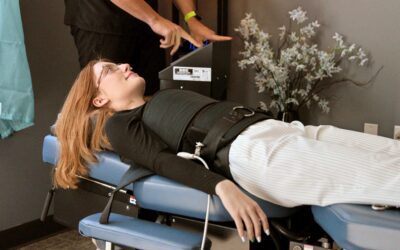Your cervical spine is the neck portion of your spine. It plays a critical role in supporting your head, allowing for movement, and maintaining proper alignment for your overall health.
A normal, healthy cervical spine has a natural, gentle curve that resembles the shape of a capital “C” when viewed from the side.
This curvature, known as the cervical lordosis, helps to absorb shock, distribute weight, and maintain balance throughout the body.
When this curve is reduced, it can lead to a host of problems, including neck pain and headaches.
What is Reduced Cervical Curvature?
Reduced cervical curvature, also called hypolordosis or cervical kyphosis (in extreme cases), occurs when the natural curve of the cervical spine flattens or even reverses.
This condition is often the result of poor posture, prolonged use of electronic devices, trauma, or degenerative changes in the spine. For example, constantly looking down at a smartphone or computer screen, often referred to as “tech neck,” can gradually cause the cervical curve to flatten.
While some people may not notice symptoms right away, over time, this abnormal spinal alignment can place excessive stress on the muscles, ligaments, and discs in the neck, leading to discomfort and more serious issues.
How Reduced Cervical Curvature Contributes to Neck Pain
The cervical curve acts as a natural shock absorber, helping the spine bear the weight of the head, which weighs about 10-12 pounds. When this curve is reduced, the head moves forward in relation to the shoulders, a condition known as forward head posture.
This abnormal positioning forces the muscles in the neck and upper back to work much harder to support the head. Over time, this increased muscle strain can lead to chronic neck pain, stiffness, and fatigue.
Additionally, a loss of the cervical curve can compress the discs and vertebrae in the neck, causing irritation to the spinal nerves. This compression may lead to pain that radiates into the shoulders, arms, or upper back, making the condition even more debilitating.
How Reduced Cervical Curvature Can Cause Headaches
Reduced cervical curvature is also closely linked to tension headaches and even migraines. When the neck muscles become strained and tight from supporting the head in an unnatural position, it can trigger tension headaches.
The tension often starts in the base of the skull and can radiate to the forehead, temples, and even behind the eyes. These headaches are usually described as a dull, constant ache, but they can also become severe and throbbing.
Changes in cervical curvature can also affect blood flow to the brain. The cervical spine houses vital arteries that supply blood to the brain. If the cervical vertebrae become misaligned due to a loss of curvature, it can put pressure on these arteries, potentially reducing blood flow.
In some cases, this restriction can contribute to headaches, dizziness, and even blurred vision.
Chiropractic Care for Restoring Cervical Curvature
Chiropractic care is one of the most effective treatments for addressing reduced cervical curvature and its associated symptoms. Through spinal adjustments, chiropractors can help realign the vertebrae, restore the natural curvature, and reduce tension in the muscles.
Chiropractic treatment can also include massage therapy to alleviate muscle tension, stretches and exercises to strengthen weak muscles, and ergonomic advice to optimize one’s workstation or daily routines.
By addressing the root cause of reduced cervical curvature, chiropractic care not only alleviates headaches and neck pain but also improves overall spinal health and function.
If you’re experiencing frequent headaches or chronic neck pain, it may be time to have your cervical spine evaluated by a chiropractor. Restoring your neck’s natural curve could be the key to relieving your discomfort and improving your quality of life.
We’re Here To Help
If you’re suffering from headaches or neck pain from reduced cervical curvature, we can help get your body back to normal. With our therapeutic massage therapy, electric muscle stimulation and spinal manipulation, we can help alleviate the pain and get your neck back to working the way it’s supposed to.
If you’re ready to learn more about how chiropractic care can improve your quality of life, we invite you to schedule an appointment and find out for yourself how chiropractic treatments help you maintain a healthy lifestyle and movement habits to give you a foundation that will help keep you out of pain with health that comes naturally.
Call 417 Spine to schedule an appointment and get started on your path to optimal health.


